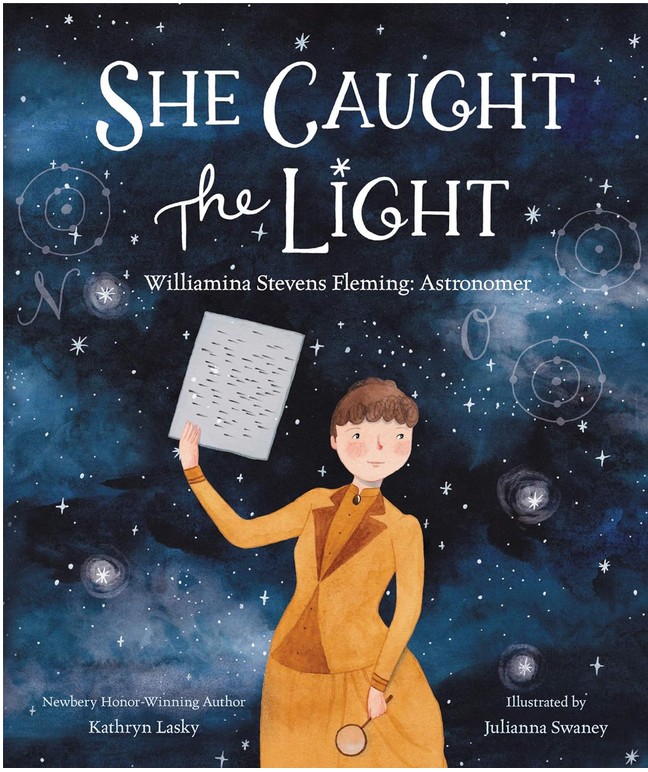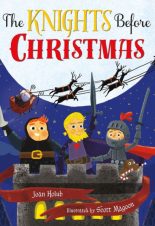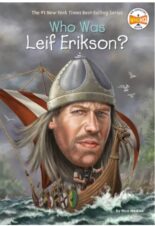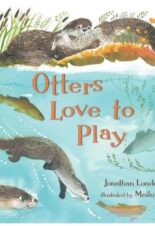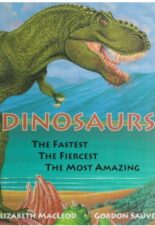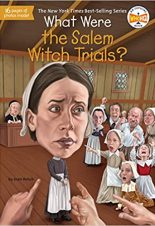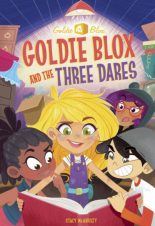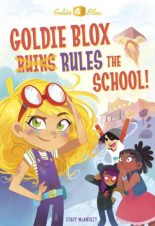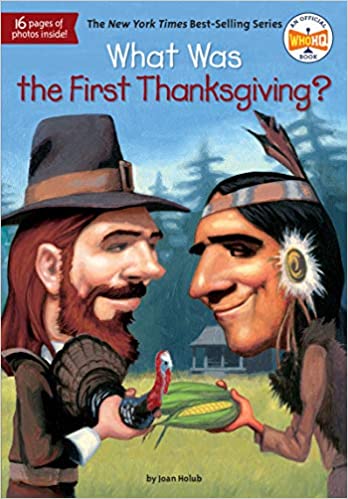
Buy This Book
“The Pilgrims and the Wampanoag were very different. They spoke different languages. They lived in different kinds of houses. . .By celebrating together, they got to know each other better. Maybe they learned that they had more in common than it first seemed.” –What Was the First Thanksgiving?
What Was the First Thanksgiving?
by Joan Holub
AR Test, Good for Reluctant Readers
8+
Score
5.0
112
After their first harvest in 1621, the Pilgrims at Plymouth shared a three-day feast with their Native American neighbors. Of course, the Pilgrims and the Wampanoag didn’t know it at the time, but they were making history. However, before that first Thanksgiving, the Pilgrims first had to travel to the New World and set up their colony.
What Was the First Thanksgiving? begins with the reasons the Pilgrims left England and the difficult task of settling an untamed land. From the start, the Pilgrims had a rocky relationship with the Native Americans. But without the Native Americans’ help, the Pilgrims would most likely have perished. The book explores the complicated history between the Wampanoags and the Pilgrims.
What Was the First Thanksgiving? will pull readers in with its fun format which has large, black and white illustrations on every page. The book uses large font, short chapters, and easy vocabulary that makes the book easy to read. Plus, each event is explained fully and broken into smaller sections, so readers will not get confused.
To give readers a better understanding of the time period, the book includes sections with additional information about the people and the times. Plus, there are 16 pages of historical artwork depicting the Wampanoags, the Pilgrims, the Mayflower, and more. Topics cover everything from the Wampanoag, Squanto, and other historical people. The end of the book also includes a timeline.
Even though the book focuses on the Pilgrims, it doesn’t portray them as if they were perfect people. Instead, the book explores how the Pilgrims took advantage of the Wampanoag people. For example, when they first arrived in Massachusetts, the Pilgrims “stole some corn. This meant that the Native Americans who’d harvested it would not have the corn for themselves. They might go hungry.” Despite this, for a brief time the Pilgrims and the Wampanoag people came together to “rejoice together after we had gathered the fruits of our labors.”
Anyone interested in the Pilgrims should read What Was the First Thanksgiving? because it gives insight into the difficulties that the Pilgrims faced. Plus, it explains how Thanksgiving became a national holiday. Most people probably do not realize that without Sarah Hale, an author and editor for a magazine, Thanksgiving would never have become an important American tradition.
What Was the First Thanksgiving? educates readers through interesting facts that are presented in an appealing format. The book is perfect for readers who need to research Thanksgiving and the Pilgrims. The back of the book also includes a bibliography with additional resources for readers who want to learn even more. Readers eager to read more about the Pilgrims should add The Mayflower by Kate Messner and A Journey to the New World: The Diary of Remember Patience Whipple by Kathryn Lasky to their must-read list.
Sexual Content
- None
Violence
- When the colonists began taking over the Algonquian’s land, the “tribe began attacking the settlers. In the winter of 1610, they surrounded the colony. Trapped, the colonists were soon starving. Only sixty settlers survived.”
- When they first got to Massachusetts, the Pilgrims stole the native people’s corn. “Native Americans attacked. They yelled war cries and shot arrows at the Pilgrims, who fired their muskets.” No one was injured.
Drugs and Alcohol
- None
Language
- None
Supernatural
- None
Spiritual Content
- The Puritans did not want to be part of the Church of England because they believed “the Bible was the law in religion.”
- When the Mayflower reached Massachusetts, the Pilgrims “said prayers of thanks.”
- The Pilgrims believed that the “Native Americans were savages because they lived in a different way. The Pilgrims believed they were special, and that God wanted them to claim the land in America for their own.”
- The Wampanoag had their own religion. “They believed there were spirits in the rivers and forest around them.”
- The Wampanoag leader tried to drive the white people away, so “he led attacks against English settlements all around New England. The English settlers attacked the Wampanoag in return. . . Many were killed on both sides.”
“The Pilgrims and the Wampanoag were very different. They spoke different languages. They lived in different kinds of houses. . .By celebrating together, they got to know each other better. Maybe they learned that they had more in common than it first seemed.” –What Was the First Thanksgiving?
Latest Reviews

Goodbye Days

Medusa

Simone Biles Vs. Nadia Comaneci: Who Would Win?
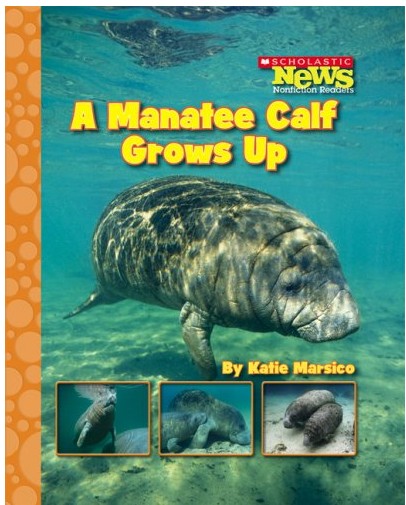
A Manatee Calf Grows Up
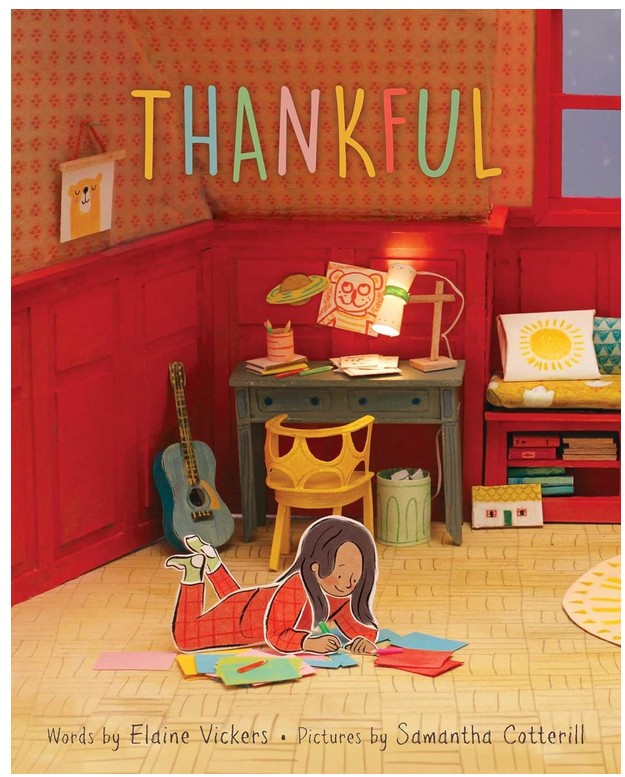
Thankful
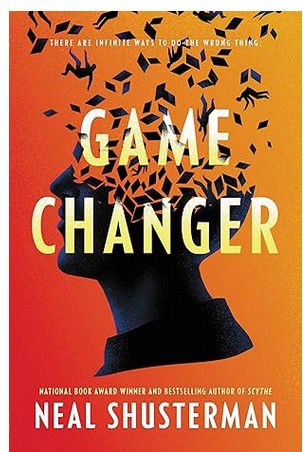
Game Changer

Swimming with Spies
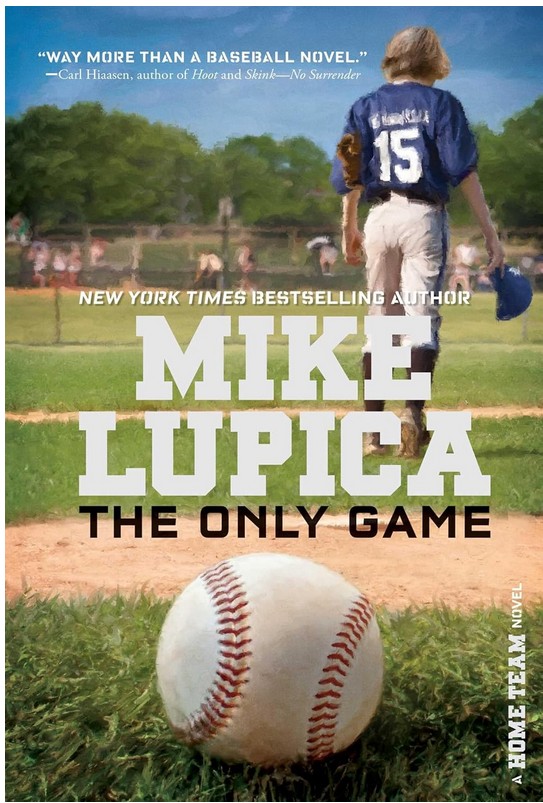
The Only Game
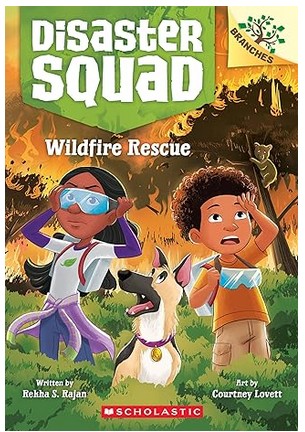
Wildfire Rescue
